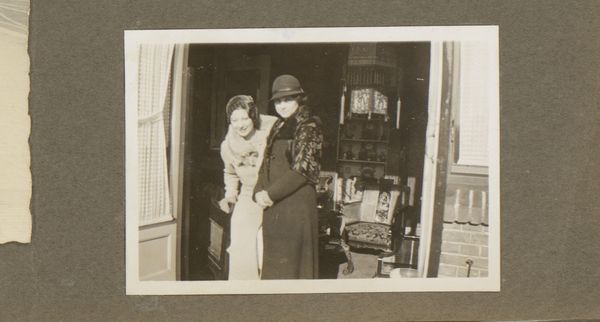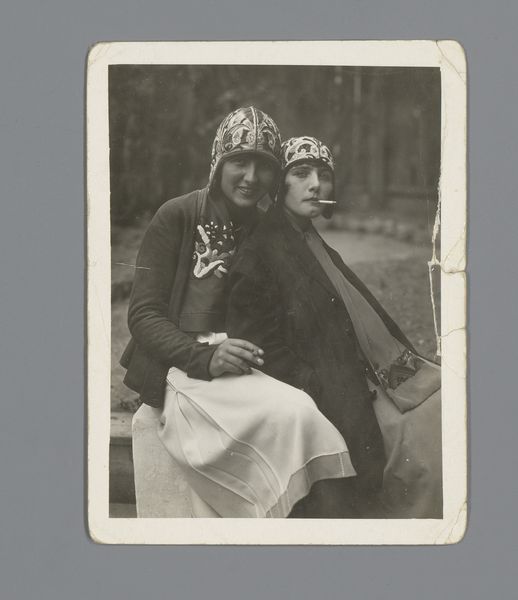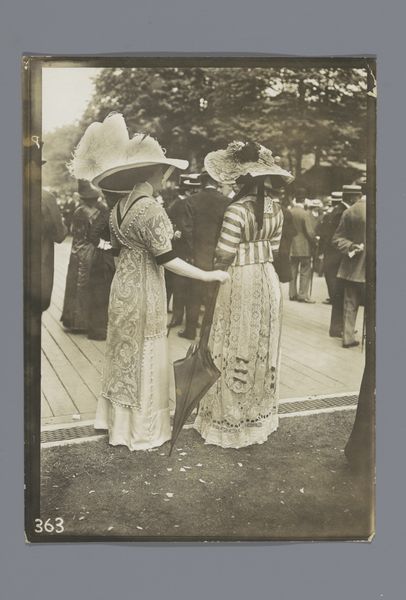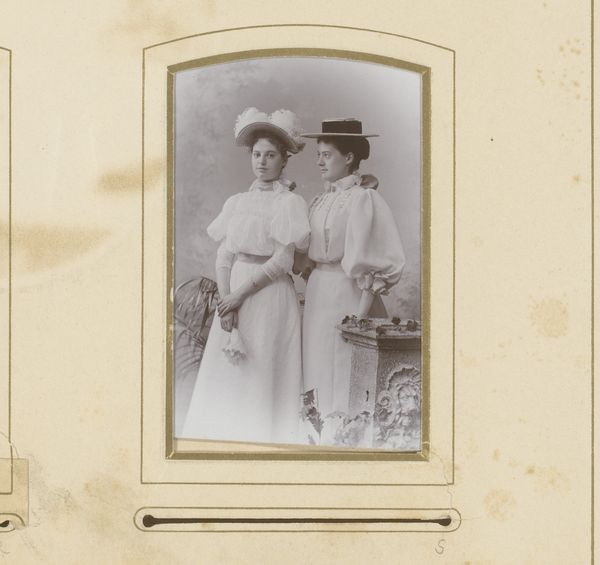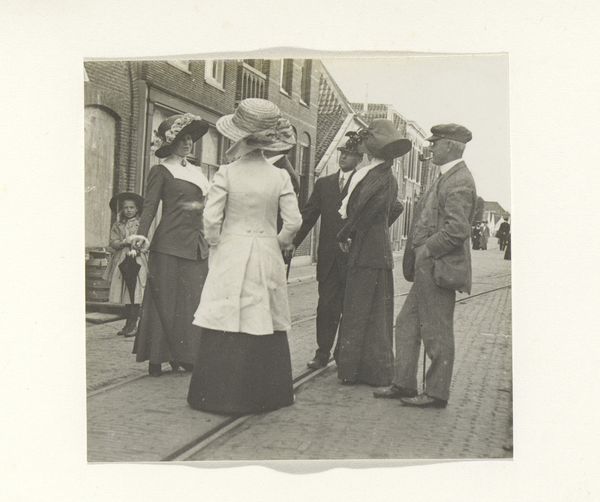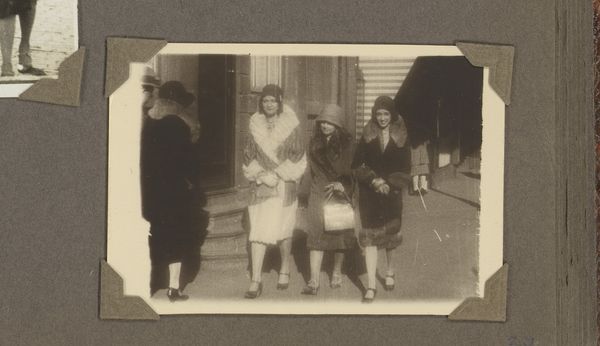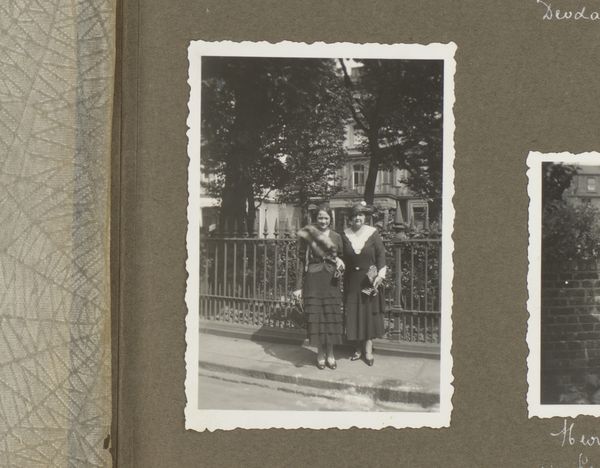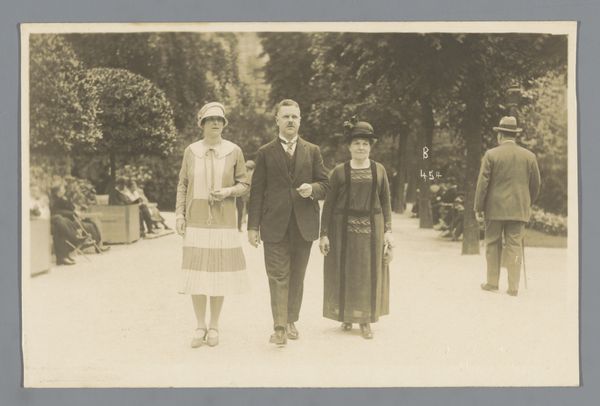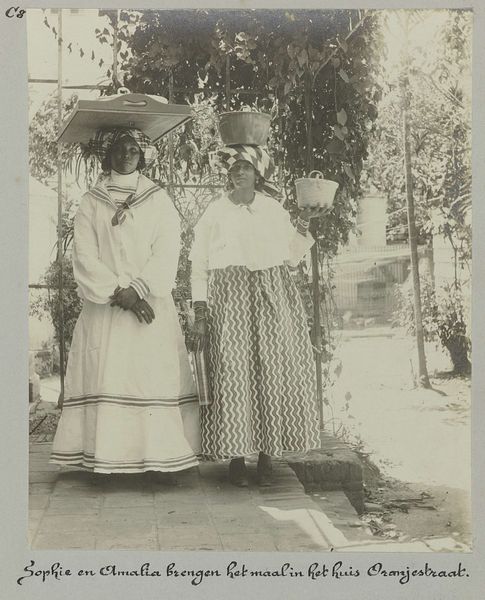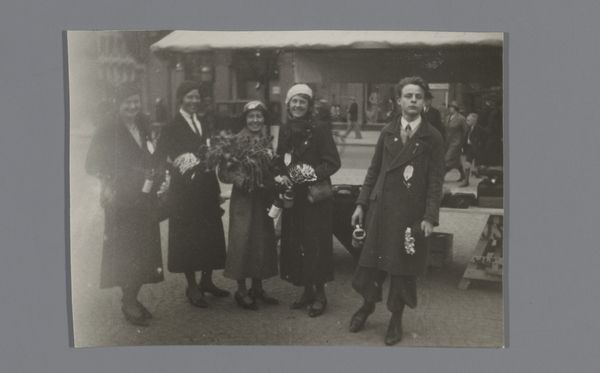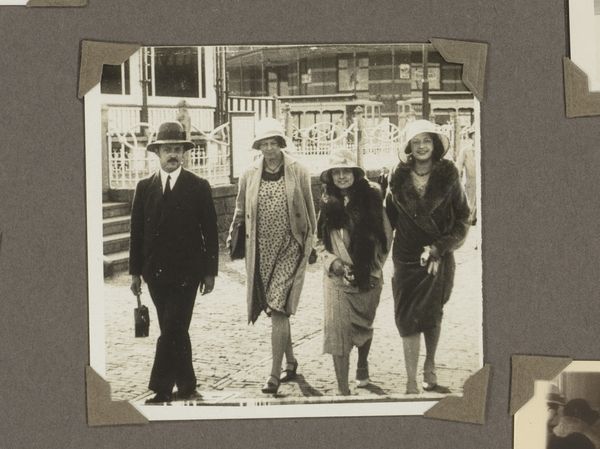
photography
#
portrait
#
street-photography
#
photography
#
modernism
Dimensions: height 95 mm, width 82 mm
Copyright: Rijks Museum: Open Domain
Editor: This photograph, titled "Dootje en Wilhelmina van Zijll de Jong, vermoedelijk in Parijs," dates from around 1930 to 1935. It’s a street scene, a photographic portrait of two women. There's a real sense of place...what jumps out to you? Curator: It's fascinating how this image captures the intersection of gender, class, and place during the interwar period. Consider the figures’ fashion: the cloche hats, the draping dresses… How do they participate in shaping their identities? Editor: I suppose that they want to seem more modern... perhaps? How are those social changes captured? Curator: Precisely! Consider the flapper aesthetic – a deliberate break from Victorian norms, signaling women's newfound freedoms. It can be connected to other images and social realities for many marginalized identities during that time. Paris, particularly, was a cultural crossroads, where ideas circulated. These women are claiming their space within that narrative. Editor: That's fascinating. It's more than just a snapshot, isn't it? What were the main tensions of women artists at that moment? Curator: This photograph hints at larger issues like class disparities as new wealth created opportunity but there were still strict constraints, while other realities like access and the cultural dominance for people of color was harder. It is impossible to imagine the interwar Paris, without including Black models or artists escaping racism back home in America. It is a good prompt to do some more research. Editor: Right, it adds another layer to it. Thank you for pointing that out! I will think more critically about these issues from now on. Curator: And that critical lens helps us understand not only the art but ourselves in relation to it. It is all about a bigger framework in the long term.
Comments
No comments
Be the first to comment and join the conversation on the ultimate creative platform.
